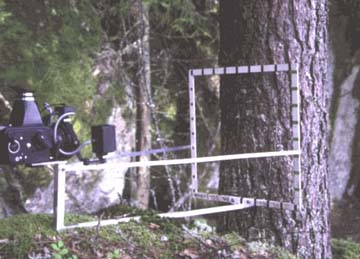

Trunk-living epiphytes |
Aims
Tree epiphytes are directly exposed to pollutants, both those that are dissolved in water and exist as gas and particles. The pollutants can be both poison and nutrient. Since long lichens are known to be good indicators of mainly acidifying substances in areas with a heavy pollution load, such as urban and industrial areas. In background areas with little pollution they have not been much tested as indicators. For most common species pH sensitivity values have been established, which makes possible calculation of a sensitivity index for the whole lichen community. Trunk-living species are observed every five years on twenty trees per site distributed on four random plots with five trees above a minimum size each. All tree species could be represented. At present Norway spruce, Scots pine, birch, oak, sallow (Salix caprea) and aspen are monitored, even though Norway spruce is most numerous in the sample. Presence is noted for all species living on the trunk between 50 and 200 cm above the ground. On each tree a transparent plastic sheet 40x40 cm containing 400 points is perpendicularly fastened in a position which is permanently marked. Then the number of points that hit each species is noted and given as point frequency. In addition also the length of the longest lichen thallus and the vigour of a common lichen species are noted.
Variables |
 |
|